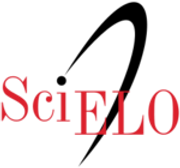Prehispanical architecture of Lima between XI and XV centuries: The cases of the conservation of Mateo Salado's A Pyramid
DOI:
https://doi.org/10.21754/devenir.v2i3.262Keywords:
huaca, Yschma, soil, conservationAbstract
Since year 1000 of the Christian era to the late pre-Hispanic period, the Yschma culture flourished in Lima. Its heritage are numerous huacas or pre-Hispanic buildings, which are characterized by soil as the main building material, from mortar to lay stones to large blocks and plasters. Historical testimony of this period are archaeological sites like the Maranga Complex, located in the current Parque de las Leyendas, the Catholic University and the University of San Marcos, and others like Mateo Salado, Huaca La Luz, Huantille, Huantinamarca, San Borja, La Merced and many more. These buildings have been seriously affected by the passage of time, earthquakes and the advance of modernity. This essay presents the constructive - structural description of the archaeological complex Mateo Salado (1532 AD - 1100 AD), and the conservation and consolidation work performed in 2007 in the pyramid A, developed by an interdisciplinary team that integrated archeology, conservation and structural engineering, which was oriented by the concept of respect for authenticity, deep knowledge of the constructive material, structural safety and intervention with minimal impact on the cultural value.
Downloads
References
Barrow, J., Porter, D., Farneth, S. y Tolles, L. (2005). Las Flores Adobe Seismic Retrofit: A Case Study Using GSAP Guidelines and Development of Compatible and Reversible Grouts. International Conference SismoAdobe 2005. Conferencia llevada a cabo en Pontificia Universidad Católica del Perú, Lima, Perú.
Brandi, C. (1988). Teoría de la restauración. Madrid, España: Editorial Alianza Forma.
Blondet, M., Vargas, J. y Tarque, N. (2007). Behavior of earthen structures during the Pisco earthquake, Peru. Lima, Perú: Pontificia Universidad Católica del Perú.
Blondet, M., Vargas, J., Ginocchio, F., Morales, K. y Iwaki, C. (2007). Estudio Preliminar del Uso de Grouts de Barro para Reparar Fisuras Estructurales en Muros Históricos de Adobe. AdobeUSA 2007, EE.UU.
Blondet, M., Vargas, J., Ginocchio, F., Villa Garcia, G., Morales, K. y Iwaki, C. (2007). Reparación de grietas en construcciones históricas de tierra en áreas sísmicas. (Informe Final DAI). Lima, Perú: Pontificia Universidad Católica del Perú.
Blondet, M., Vargas, J., Ginocchio, F., Villa García, G., Sánchez, K., Fernández, C. y Chang, J. (2008). Reparación de grietas en construcciones históricas de tierra en áreas sísmicas. Parte II. (Informe Final DAI). Lima, Perú: Pontificia Universidad Católica del Perú.
Canziani, J. (2009). Ciudad y territorio en los Andes. Contribuciones a la historia del urbanismo prehispánico. Lima, Perú: Pontificia Universidad Católica del Perú.
González-Varas, I. (2006). Conservación de bienes culturales: Teoría, historia, principios y normas. Madrid, España: Cátedra.
Figueroa, A. (2007). Complejo arqueológico Mateo Salado. Proyecto de investigación, conservación y puesta en valor – I Etapa. Lima, Perú: Instituto Nacional de Cultura.
Instituto Nacional de Cultura. (2009). Arqueología de Lima: Mateo Salado. Cuadernos del Patrimonio Cultural 2. Lima. Perú.
Pérez, M. (2000). Investigación en Mateo Salado. Cuaderno de Investigación Nº 1 del Museo Nacional de Arqueología, Antropología e Historia del Perú. Lima, Perú.
Tello, J. C. (1999). Arqueología del valle de Lima. Cuadernos de Investigación del Archivo Tello 1. Lima, Perú: Museo de Arqueología y Antropología de la Universidad Nacional Mayor de San Marcos.
Tolles, E. L., Kimbro, E. E., Webster, F. A. & Ginell, W. S. (2000). Seismic Stabilization of Historic Adobe Structures (Final Report of the Getty Seismic Adobe Project). California, EE.UU.: The Getty Conservation Institute. Recuperado de http://www.getty.edu/conservation/publications_resources/pdf_publications/pdf/seismicstabilization.pdf
Santa Cruz, E. (2009). Proyecto de intervención en el sector del Acllahuasi del Sitio Arqueológico de Pachacamac (Informe Final). Lima, Perú: Organización de las Naciones Unidas para la Educación, la Ciencia y la Cultura.
Vargas, J., Blondet, M., Ginocchio, F. y Villa-García, G. (1978). La vivienda rural de adobe. Lima, Perú: Pontificia Universidad Católica del Perú.
Vargas, J., Bariola, J., Blondet, M. y Metha, P. (1984). Seismic strength of adobe masonry. Lima, Perú: Pontificia Universidad Católica del Perú.
Vargas, J., Blondet, M., Cancino, C., Ginocchio, F., Iwaki, C. y Morales K. (2008). Experimental results on the use of mud-based grouts to repair seismic cracks on adobe walls. Bath, Inglaterra: CRC Press.
WJE Consultants. (2004). Rancho San Andres Castro Adobe, Rehabilitation Project. California State Parks. California, EE.UU: Autor.
Downloads
Published
How to Cite
Issue
Section
License
Articles published by DEVENIR can be shared through the Creative Commons international public license: CC BY 4.0. Permissions beyond this scope can be consulted through the email revistas@uni.edu.pe











